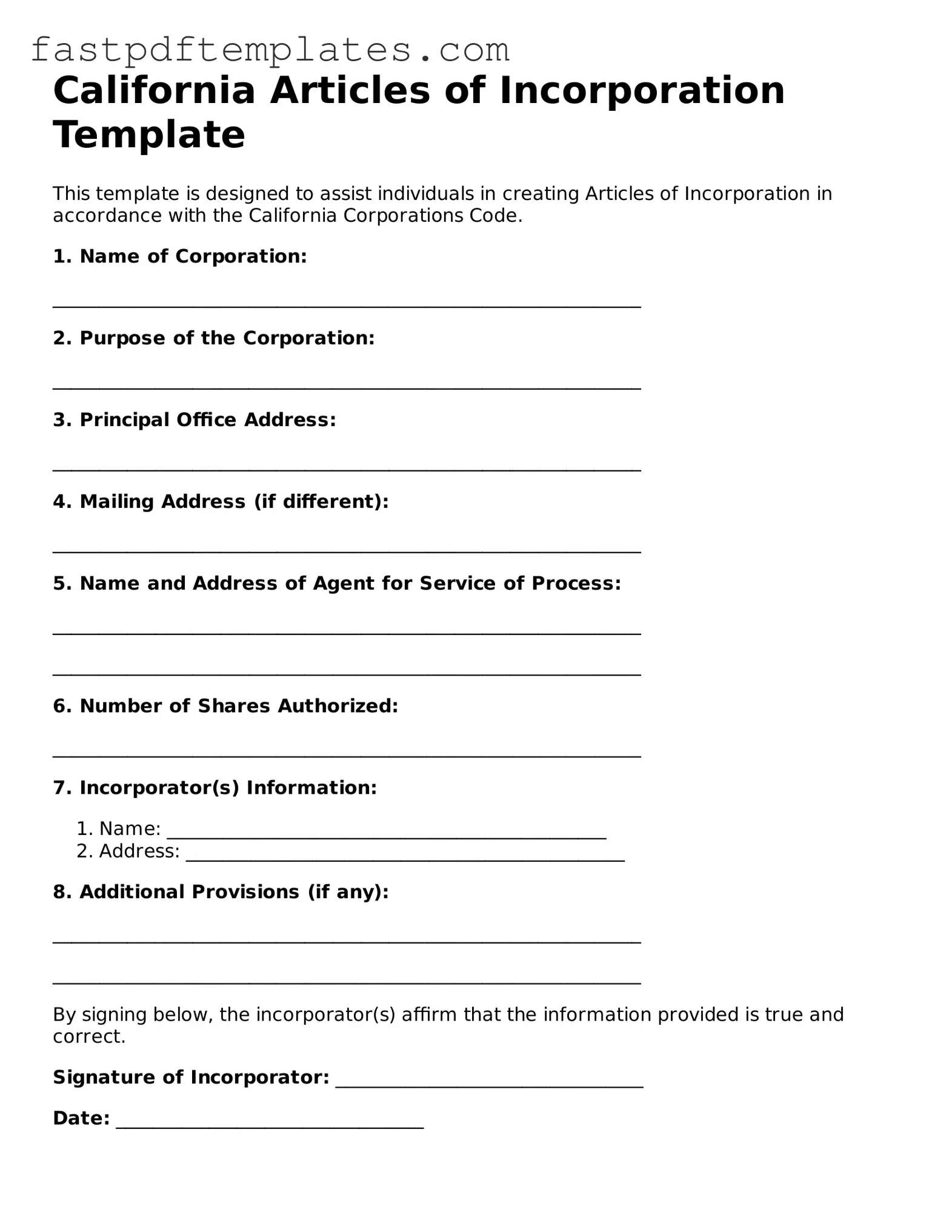California Articles of Incorporation Template
This template is designed to assist individuals in creating Articles of Incorporation in accordance with the California Corporations Code.
1. Name of Corporation:
_______________________________________________________________
2. Purpose of the Corporation:
_______________________________________________________________
3. Principal Office Address:
_______________________________________________________________
4. Mailing Address (if different):
_______________________________________________________________
5. Name and Address of Agent for Service of Process:
_______________________________________________________________
_______________________________________________________________
6. Number of Shares Authorized:
_______________________________________________________________
7. Incorporator(s) Information:
- Name: _______________________________________________
- Address: _______________________________________________
8. Additional Provisions (if any):
_______________________________________________________________
_______________________________________________________________
By signing below, the incorporator(s) affirm that the information provided is true and correct.
Signature of Incorporator: _________________________________
Date: _________________________________
